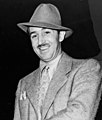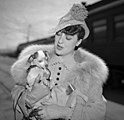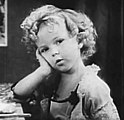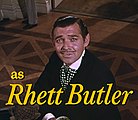1930s

| Millennium |
|---|
| 2nd millennium |
| Centuries |
| Decades |
| Years |
|
| Categories |
The 1930s (pronounced "nineteen-thirties" and commonly abbreviated as "the '30s" or "the Thirties") was a decade that began on January 1, 1930, and ended on December 31, 1939. In the United States, the Dust Bowl led to the nickname the "Dirty Thirties".
The decade was defined by a global economic and political crisis that culminated in the
Germany adopted an aggressive foreign policy,
Severe famine took place in the major grain-producing areas of the Soviet Union between 1930 and 1933, leading to 5.7 to 8.7 million deaths. Major contributing factors to the famine include: the forced collectivization in the Soviet Union of agriculture as a part of the First Five-Year Plan, forced grain procurement, combined with rapid industrialization, a decreasing agricultural workforce, and several severe droughts. A famine of similar scope also took place in China from 1936 to 1937, killing 5 million people. The 1931 China floods caused 422,499–4,000,000 deaths. Major earthquakes of this decade include the 1935 Quetta earthquake (30,000–60,000 deaths) and the 1939 Erzincan earthquake (32,700–32,968 deaths).
With the advent of
The world population increased from 2.05 to 2.25 billion people during the decade, with about 750 million births and 550 million deaths.
Politics and wars

Wars

- Republic of Peru
- Chaco War (June 15, 1932 – June 10, 1935) – fought between Bolivia and Paraguay over the disputed territory of Gran Chaco, resulting in a Paraguayan victory in 1935; an agreement dividing the territory was made in 1938, formally ending the conflict
- Mutawakkilite Kingdom of Yemen
- Second Italo-Ethiopian War (October 3, 1935 – February 19, 1937)
- Republic of China and the Empire of Japan. It was the largest Asian war of the 20th century,[1] and made up more than 50% of the casualties in the Pacific theater of World War II.
- World War II (September 1, 1939 – September 2, 1945) – global war centered in Europe and the Pacific but involving the majority of the world's countries, including all of the major powers such as Germany, Russia, America, Italy, Japan, France and the United Kingdom.
Internal conflicts
- Japanese invasion of China, but intermittent clashes continued through the remainder of the 1930s. Even with some clashes they all fought the Japanese.
- 1936–1939 Arab revolt in Palestine.
- authoritarian dictatorship.
Major political changes
Germany – Rise of Nazism
- The President of Germany, Hitler's cabinet passes a law proclaiming the presidency vacant and transferring the role and powers of the head of state to Hitler, hereafter known as Führer und Reichskanzler (leader and chancellor). The Weimar Republic effectively gives way to Nazi Germany, a totalitarian autocratic national socialist dictatorship committed to repudiating the Treaty of Versailles, persecuting and removing Jews and other minorities from German society, expanding Germany's territory, and opposing the spread of communism.
- Hitler pulls Germany out of the League of Nations, but hosts the 1936 Summer Olympics to show his new Reich to the world as well as the supposed superior athleticism of his Aryan troops/athletes.
- Prime Minister of the United Kingdom (1937–1940), attempts the appeasement of Hitler in hope of avoiding war by allowing the dictator to annex the Sudetenland (the German-speaking regions of Czechoslovakia) and later signing the Munich Agreement and promising constituents "Peace for our time". He is ousted in favor of Winston Churchill in May 1940, following the German invasion of Norway.[2]
- The assassination of the German diplomat Ernst vom Rath by a German-born Polish Jew triggers the Kristallnacht ("Night of Broken Glass") which occurred between 9 and 10 November 1938, carried out by the Hitler Youth, the Gestapo, and the SS, during which much of the Jewish population living in Nazi Germany and Austria was attacked – 91 Jews were murdered, and between 25,000 and 30,000 more were arrested and sent to Nazi concentration camps. Some 267 synagogues were destroyed, and thousands of homes and businesses were ransacked. Kristallnacht also served as the pretext for the wholesale confiscation of firearms from German Jews.
- Germany and Italy pursue territorial expansionist agendas. Germany demands the annexation of the Victor Emmanuel III of Italy.[3] Germany receives the Memel territory from Lithuania, occupies what remains of Czechoslovakia, and finally invades the Second Polish Republic, the last of these events resulting in the outbreak of World War II.
- In 1939, several countries of the Americas, including Canada, anti-Semitic persecution in Germany. In the end, no country accepts the refugees, and the ship returns to Germany with most of its passengers on board. Some commit suicide, rather than return to Nazi Germany.
United States – Combating the Depression

- Franklin D. Roosevelt is elected President of the United States in November 1932. Roosevelt initiates a widespread social welfare strategy called the "New Deal" to combat the economic and social devastation of the Great Depression. The economic agenda of the "New Deal" was a radical departure from previous laissez-faire economics.
Saudi Arabia – Founding
- The Ibn Saud.
Spain – Turmoil and Civil War
- The Republican parties win the Alfonso XIII of Borbón.
- The Spanish coup of July 1936 against the Republic marks the beginning of the Spanish Civil War.
Colonization
- The Second Italo-Abyssinian War from 1935 to 1936. The occupied territory merges with Eritrea and Italian Somaliland into the colony of Italian East Africa.
- The Empire of Japan captures Manchuria in 1931, creating the puppet state of Manchukuo. A puppet government was created, with Puyi, the last Qing dynasty Emperor of China, installed as the nominal regent and emperor.[4]
Decolonization and independence
- In March 1930 Salt March.
- The Government of India Act 1935 creates new directly elected bodies, although with a limited franchise, and increases the autonomy of the Presidencies and provinces of British India.
Other prominent political events
- The Great Depression seriously affects the economic, political, and social aspects of society across the world.
- The League of Nations collapses as countries like Germany, the Kingdom of Italy, and the Empire of Japan abdicate the League.
Europe

- In 1930, Bourbon Restoration phase which had started in the 1870s. A Second Spanish Republicemerges.
- In the Soviet Union, agricultural collectivization and rapid industrialization take place.[5] Millions died during the Holodomor.
- More than 25 million people migrate to cities in the Soviet Union.
- Anglo-German Naval Agreement is signed in 1935, removing the Treaty of Versailles' level of limitation on the size of the Kriegsmarine (navy). The agreement allows Germany to build a larger naval force.
- Éamon de Valera introduces a new constitution for the Irish Free State in 1937, effectively ending its status as a British Dominion.
- The King George V as the King of the United Kingdom and the British Dominions, and Emperor of India. It was the first ever Silver Jubilee celebration of any British monarch in history.
- The "Great Purge" of "Old Bolsheviks" from the Communist Party of the Soviet Union takes place from 1936 to 1938, as ordered by Soviet Union leader Joseph Stalin, resulting in hundreds of thousands of people being killed. This purge was due to mistrust and political differences, as well as the massive drop in grain produce. This was due to the method of collectivization in Russia. The Soviet Union produced 16 million lbs of grain less in 1934 compared to 1930. This led to the starvation of millions of Russians.
- The Abdication of Edward VIII in 1936, gives the British Crown to George VI, 325 days after the death of his father George V. The Coronation of George VI and Elizabeth takes place in May 1937.
- The Guernica at the World Fair, which was a surrealistdepiction of the horror of the bombing.
- Referendum in the Irish Free State in December 1937 on whether Ireland should continue to be a constitutional monarchy under King George VI or to become a republic results in citizens voting in favour of a republic, ending the remains of British sovereignty through monarchial authority over the state.
Africa
- Hertzog of South Africa, whose National Party had won the 1929 election alone after splitting with the Labour Party, received much of the blame for the devastating economic impact of the Depression.
Americas
- Canada and other dominions under the British Empire sign the Statute of Westminster in 1931, establishing effective parliamentary independence of Canada from the parliament of the United Kingdom.
- 1939 New York World's Fair, the USA displays the pavilions showing art, culture, and technology from the whole world.
- Commission of Government, a non-elected body.
- Canadian Prime Minister W. L. Mackenzie King meets with German Führer Adolf Hitler in 1937 in Berlin. King is the only North American head of government to meet with Hitler.
- Amelia Earhart receives major attention in the 1930s as the first woman pilot to conduct major air flights. Her disappearance for unknown reasons in 1937 while on flight prompted search efforts that failed.
- Southern Great Plains devastated by decades-long Dust Bowl
- In 1932, the Polish Cipher Bureau broke the German Enigma cipher and overcame the ever-growing structural and operating complexities of the evolving Enigma machine with plugboard, the main German cipher device during World War II.
- 1930 coup d'état.
Asia
- Major international media attention follows Mohandas Gandhi's peaceful resistancemovement against the British colonial rule in India.
- Chinese Communist Party leader Mao Zedong forms the small enclave state called the Chinese Soviet Republic in 1931.
- The Viceroy of India, on March 5, 1931. Gandhi agrees to end the campaign of civil disobedience being carried out by the Indian National Congress(INC) in exchange for Irwin accepting the INC to participate in roundtable talks on British colonial policy in India.
- The Government of India Act of 1935 is enacted by the Governor-General of India, separating British Burma to become a separate British possession and also increasing the political autonomy of the remaining presidencies and provinces of British India.
- Mao Zedong's Chinese communists begin a large retreat from advancing nationalist forces, called the Long March, beginning in October 1934 and ending in October 1936 and resulting in the collapse of the Chinese Soviet Republic.
- Colonial India's Muhammed Ali Jinnah delivers his "Day of Deliverance" speech on December 2, 1939, calling upon Muslims to begin to engage in civil disobedience against the British colonial government starting on December 12. Jinnah demands redress and resolution to tensions and violence occurring between Muslims and Hindus in India. Jinnah's actions are not supported by the largely Hindu-dominated Indian National Congress whom he had previously closely allied with. The decision is seen as part of an agenda by Jinnah to support the eventual creation of an independent Muslim state called Pakistanfrom British Empire.
Australia
- Australia and New Zealand sign the Parliament of New Zealand gain full legislative authority over their territories, no longer sharing powers with the Parliament of the United Kingdom.
Disasters
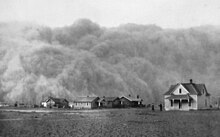
- The China floods of 1931 are among the deadliest natural disasters ever recorded.
- The Islamoradawas obliterated.
- The German dirigible airship Hindenburg explodes in the sky above Lakehurst, New Jersey, United States on May 6, 1937, killing 36 people. The event leads to an investigation of the explosion and the disaster causes major public distrust of the use of hydrogen-inflated airships and seriously damages the reputation of the Zeppelin company.
- The New London School in New London, Texas, is destroyed by an explosion, killing in excess of 300 students and teachers (1937).
- The New England Hurricane of 1938, which became a Category 5 hurricane before making landfall as a Category 3. The hurricane was estimated to have caused property losses of US$306 million ($4.72 billion in 2010), killed between 682 and 800 people, and damaged or destroyed over 57,000 homes, including the home of famed actress Katharine Hepburn, who had been staying in her family's Old Saybrook, Connecticut, beach home when the hurricane struck.
- The dust storms causing major ecological and agricultural damage to American and Canadian prairie lands from 1930 to 1936 (in some areas until 1940). Caused by extreme drought coupled with strong winds and decades of extensive farming without crop rotation, fallow fields, cover crops, or other techniques to prevent erosion, it affected an estimated 100,000,000 acres (400,000 km2) of land (traveling as far east as New York and the Atlantic Ocean), caused mass migration (which was the inspiration for the Pulitzer Prize-winning novel The Grapes of Wrath by John Steinbeck), food shortages, multiple deaths and illness from sand inhalation (see History in Motion), and a severe reduction in the going wage rate.
- The 1938 Yellow River flood pours out from Huayuankou, China, inundating 54,000 km2 (21,000 sq mi) of land and killing an estimated 500,000 people.
Assassinations

Prominent assassinations include:
- French president Paul Doumer is assassinated in 1932 by Paul Gorguloff, a mentally unstable Russian émigré.
- U.S. presidential candidate and former Governor of Louisiana Huey Long is assassinated in 1935 by Carl Weiss.
- Italian Fascistand Nazi regimes.
- Alexander I of Yugoslavia is assassinated in 1934 during a visit to Marseille, France. His assassin was Vlado Chernozemski, a member of the Internal Macedonian Revolutionary Organization. The IMRO was a political organization that fought for secession of Vardar Macedonia from Yugoslavia.[6]
- Sergei Kirov, an early Bolshevik revolutionary and personal friend to Joseph Stalin, is assassinated in 1934, escalating political repression in the Soviet Union.
Economics

- The Great Depression is considered to have begun with the fall of stock prices on September 4, 1929, and then the stock market crash known as Black Tuesday on October 29, 1929, and lasted through much of the 1930s.
- The entire decade is marked by widespread unemployment and poverty, although deflation (i.e. falling prices) was limited to 1930–32 and 1938–39. Prices fell 7.02% in 1930, 10.06% in 1931, 9.79% in 1932, 1.41% in 1938 and 0.71% in 1939.[7]
- Keynesianism replaces classical economic theory.
- In an effort to reduce unemployment, the United States government created work projects such as the Civilian Conservation Corps (CCC) which was a public work relief program that operated from 1933 to 1942 to maintain National Parks and build roads. Other major U.S. government work projects included Hoover Dam which was constructed between 1931 and 1936.
- Rapid industrialization takes place in the Soviet Union.
- Prohibition in the United States ended in 1933. On December 5, 1933, the ratification of the Twenty-first Amendment repealed the Eighteenth Amendment to the United States Constitution.
- Drought conditions in Oklahoma and Texas caused the Dust Bowl which forced tens of thousands of families to abandon their farms and seek employment elsewhere.
Science and technology
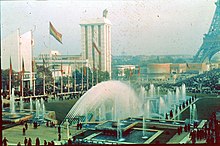
Technology
Many technological advances occurred in the 1930s, including:
- Frank Whittle obtained his first patent for the turbo-jet engine in 1930. He tested his first jet engine on the ground in 1937.
- On March 8, 1930, the first frozen foods of Clarence Birdseye were sold in Springfield, Massachusetts, United States.
- Alan Blumlein invented the stereophonic sound in 1931.
- Nestlé releases the first white chocolate candy as the Milkybar.;[8]
- Ub Iwerks produced the first Color Sound Cartoon in 1930, a Flip the Frog cartoon entitled Fiddlesticks;
- In 1930, Warner Brothers released the first All-Talking All-Color wide-screen movie, Song of the Flame; in 1930 alone, Warner Brothers released ten All-Color All-Talking feature movies in Technicolorand scores of shorts and features with color sequences;
- In 1931 American aviators Clyde Edward Pangborn and Hugh Herndon, Jr., complete the first non-stop flight across the Pacific Ocean, flying their plane, Miss Veedol, from Misawa, Japan, to East Wenatchee, Washington, in 41½ hours.[9]
- Air mailservice across the Atlantic Ocean began;
- Radar was invented, known as RDF (Radio Direction Finding), such as in British Patent GB593017 by Robert Watson-Watt in 1938;
- In 1933, the 3M company marketed Scotch Tape;
- In 1931, RCA Victorintroduced the first long-playing phonograph record.
- In 1935, the British A4 Pacific, designed by Nigel Gresley. Just three years later, one of these, No. 4468 Mallard, would become the fastest steam locomotive in the world.
- In 1935, Eastman Kodak.
- In 1936, The first regular high-definition (then defined as at least 200 lines) television service from the BBC, based at Alexandra Palace in London, officially begins broadcasting.
- Fritz Strassmanin 1939.
- The automobiles ever produced, had its roots in Nazi Germany in the late 1930s. Created by Ferdinand Porsche and his chief designer Erwin Komenda. The car would prove to be successful, and is still in production today as the New Beetle.
- In 1935, Howard Hughes, flying the H-1, set the landplane airspeed record of 352 mph (566 km/h).
- In 1937, flying the same H-1 Racer fitted with longer wings, the ambitious Hughes sets a new transcontinental airspeed record by flying non-stop from Los Angeles to Newark in 7 hours, 28 minutes, and 25 seconds (beating his own previous record of 9 hours, 27 minutes). His average ground speed during the flight was 322 mph (518 km/h).[10]
- First intercontinental commercial airline flights.
- The chocolate chip cookie is developed in 1938 by Ruth Graves Wakefield.
- The Frying Pan becomes the first electric lap steel guitarever produced.
- Edwin Armstrong invents wide-band frequency modulationradio in 1933.
- The bass guitar is invented by Paul Tutmarc of Seattle, Washington, in 1936.
- EMI research team, under Isaac Shoenberg, developed the 405-line (Marconi-EMI system), the first fully electronic television system in 1936.
Science

- Astronomer Clyde Tombaugh discovers Pluto in 1930, which goes on to be announced as the ninth planet in the Solar System.
- Albert Einstein's equations form the basis for creation of the atomic bomb.
Popular culture
Literature and art
- Height of the Art Deco movement in North America and Western Europe.
- Notable poetry include W. H. Auden's Poems.
- Notable literature includes Butterfield 8 (1935), and Margaret Mitchell's Gone with the Wind (1936), which was later famously adapted into a filmin 1939.
- Notable "hardboiled" crime fiction includes Raymond Chandler's The Big Sleep, Dashiell Hammett's The Maltese Falcon, James M. Cain's The Postman Always Rings Twice (1934).
- Notable plays include Thornton Wilder's Our Town (1938).
- Near the end of the decade, two of the world's most iconic superheroes and recognizable fictional characters were introduced in comic books; Superman first appeared in 1938, and Batman in 1939.
- The 1930 also saw the widespread popularity of the pulp magazine. Printed on cheap pulp paper, these magazines provided affordable entertainment to the masses and quickly became one of the most popular forms of media during the decade. Many prominent writers of the 20th century would get their start writing for pulps, including F. Scott Fitzgerald, Dashiell Hammett, Issac Asimov and H. P. Lovecraft. Pulp fiction magazines would last in popularity until the advent of television in the 1950s.
- Popular comic strips which began in the 1930s include Captain Easy by Roy Crane, Alley Oop by V. T. Hamlin, Prince Valiant by Hal Foster, and Flash Gordon by Alex Raymond.
- The beginning of the Golden Age of Science Fiction in the late-1930s, spurred on by writer and editor John C. Campbell, launching the careers of such writers as Robert Heinlein, Issac Asimov and A. E. van Vogt.
- David Alfaro Siqueiros paints the controversial mural América Tropical (full name: América Tropical: Oprimida y Destrozada por los Imperialismos, or Tropical America: Oppressed and Destroyed by Imperialism[11]) (1932) at Olvera Street in Los Angeles, California.[12]
Best-selling books
The best-selling books of every year in the United States were as follows:[13]
- 1930: Cimarron by Edna Ferber
- 1931: The Good Earth by Pearl S. Buck
- 1932: The Good Earth by Pearl S. Buck
- 1933: Anthony Adverse by Hervey Allen
- 1934: Anthony Adverse by Hervey Allen
- 1935: Green Light by Lloyd C. Douglas
- 1936: Gone with the Wind by Margaret Mitchell
- 1937: Gone with the Wind by Margaret Mitchell
- 1938: The Yearling by Marjorie Kinnan Rawlings
- 1939: The Grapes of Wrath by John Steinbeck
Film
- Charlie Chaplin's groundbreaking classic, "City Lights", was released in 1931.
- Charlie Chaplin's last film featuring his signature character, "The Tramp", was subsequently released in 1936.
- Walt Disney's Snow White and the Seven Dwarfs was released in 1937.
- The Little Princess was released in 1939.
- The Wizard of Ozwas released in 1939.
- In the art of filmmaking, the The Wizard of Oz.
- The new soundtrack and photographic technologies prompted many films to be made or re-made, such as the 1934 version of Academy Award (see films 1930–1939 in Academy Award for Best Cinematography).
- Lon Chaney Jr, and Boris Karloff.
- Recurring series and serials included The Three Stooges, Laurel and Hardy, the Marx Brothers, Tarzan, Charlie Chan and Our Gang.
- In 1930, Howard Hughes produces Hell's Angels, the first movie blockbuster to be produced outside of a professional studio, independently, and at the time the most expensive movie ever made, costing roughly 4 million dollars and taking four years to make.
-
Charlie Chaplin in a scene from the film Modern Times (1936)
-
The Wizard of Oz(1939)
-
The Three Stooges produced multiple short comedy films with Columbia Pictures during the decade, making them icons.[14]
Highest-grossing films
| Year | Title | Worldwide gross | Budget | Reference(s) |
|---|---|---|---|---|
| 1930 | All Quiet on the Western Front | $3,000,000R | $1,250,000 | [# 1][# 2][# 3][# 4] |
| 1931 | Frankenstein | $12,000,000R ($1,400,000)R | $250,000 | [# 5][# 6] |
| City Lights | $5,000,000R | $1,607,351 | [# 7] | |
| 1932 | The Sign of the Cross | $2,738,993R | $694,065 | [# 8][# 9][# 10][# 11] |
| 1933 | King Kong | $5,347,000R ($1,856,000)R | $672,255.75 | [# 12] |
| I'm No Angel | $3,250,000+R | $200,000 | [# 13][# 14] | |
| Cavalcade | $3,000,000–4,000,000R | $1,116,000 | [# 15][# 3] | |
| She Done Him Wrong | $3,000,000+R | $274,076 | [# 16][# 17][# 18] | |
| 1934 | The Merry Widow | $2,608,000R | $1,605,000 | [# 19][# 10] |
| It Happened One Night | $2,500,000R ON | $325,000 | [# 20][# 21] | |
| 1935 | Mutiny on the Bounty | $4,460,000R | $1,905,000 | [# 10] |
| 1936 | San Francisco | $6,044,000+R ($5,273,000)R | $1,300,000 | [# 19][# 10] |
| 1937 | Snow White and the Seven Dwarfs | $418,000,000+S7 ($8,500,000)R | $1,488,423 | [# 22][# 23] |
| 1938 | You Can't Take It With You
|
$5,000,000R | $1,200,000 | [# 24][# 25] |
| 1939 | Gone with the Wind | $390,525,192–402,352,579 | $3,900,000–4,250,000 | [# 26][# 27][# 28][# 29] |
Radio
- Radio becomes dominant mass media in industrial nations, serving as a way for citizens to listen to music and get news- providing rapid reporting on current events.
- October 30, 1938: The War of the Worldsis broadcast, causing panic in various parts of the United States.
Music
- " that had been popular for the first half of the decade.
- "Delta Blues" music, the first recorded in the late 1920s, was expanded by Robert Johnson and Skip James, two of the most important and influential acts of "Blues" genre.
- Django Reinhardt and Stéphane Grappelli led the development of Gypsy jazz.
- Sergei Rachmaninoff composed Rhapsody on a Theme of Paganini in 1934.
- Charlie Christian becomes the first electric guitarist to be in a multiracial band with Benny Goodman and Lionel Hampton in 1939.[15]
The most popular music of each year was as follows:[16]
- 1930: Body and Soul (music by Johnny Green, lyrics by Edward Heyman, Robert Sour and Frank Eyton)
- 1931: Life Is Just a Bowl of Cherries (music by Ray Henderson, lyrics by Lew Brown)
- 1932: Night and Day (Cole Porter)
- 1933: It's Only a Paper Moon (music by Harold Arlen, lyrics by Yip Harburg and Billy Rose)
- 1934: Blue Moon (written by Richard Rodgers and Lorenz Hart)
- 1935: Begin the Beguine (Cole Porter)
- 1936: I'm an Old Cowhand (written by Johnny Mercer, sung by Bing Crosby)
- 1937: A Foggy Day (composed by George Gershwin, with lyrics by Ira Gershwin)
- 1938: Chiquita Banana
- 1939: All the Things You Are (composed by Jerome Kern with lyrics written by Oscar Hammerstein II)
Fashion
The most characteristic North American fashion trend from the 1930s to 1945 was attention at the shoulder, with butterfly sleeves and banjo sleeves, and exaggerated shoulder pads for both men and women by the 1940s. The period also saw the first widespread use of man-made fibers, especially
Revolutionary designer and couturier
Typical fashions in the 1930s:
Architecture

- The world's tallest building (for the next 35 years) was constructed, opening as the Empire State Building on May 3, 1931, in New York City.
- The Golden Gate Bridge was constructed, opening on May 27, 1937, in San Francisco, USA.
Visual arts
The
In Europe during the 1930s and the
- The 1932 Winter Olympics were hosted by the village of Lake Placid, New York, United States.
- The 1932 Summer Olympics were hosted by the city of Los Angeles, California, United States.
- The 1934 FIFA World Cup was hosted and won by Italy.
- The 1936 Winter Olympics were hosted by the market town of Garmisch-Partenkirchen, Bavaria, Germany.
- The 1936 Summer Olympics were hosted by the city of Berlin, Germany. These were the last Summer or Winter Olympic Games held until 1948.
- The 1938 FIFA World Cup was hosted by France and won by Italy. This was the last FIFA World Cup held until 1950.
People
Actors/entertainers
- Fred Allen
- Jean Arthur
- Fred Astaire
- Mary Astor
- Gene Autry
- Tallulah Bankhead
- Warner Baxter
- Wallace Beery
- Constance Bennett
- Joan Bennett
- Jack Benny
- Charles Bickford
- Joan Blondell
- Humphrey Bogart
- Charles Boyer
- Mary Brian
- Louise Brooks
- Fanny Brice
- James Cagney
- Eddie Cantor
- Frank Capra
- John Carradine
- Madeleine Carroll
- Charlie Chaplin
- Claudette Colbert
- Ronald Colman
- Katharine Cornell
- Gary Cooper
- Joan Crawford
- Bing Crosby
- Bette Davis
- Marlene Dietrich
- Walt Disney
- Robert Donat
- Irene Dunne
- Deanna Durbin
- Ann Dvorak
- Nelson Eddy
- Alice Faye
- Errol Flynn
- Henry Fonda
- Joan Fontaine
- John Ford
- Kay Francis
- Dwight Frye
- Clark Gable
- Carlos Gardel
- Eva Le Gallienne
- Greta Garbo
- Judy Garland
- Janet Gaynor
- Cary Grant
- Lillian Gish
- Jean Harlow
- Olivia de Havilland
- Helen Hayes
- Katharine Hepburn
- Bob Hope
- Miriam Hopkins
- Leslie Howard
- Boris Karloff
- Buster Keaton
- Laurel and Hardy
- Dorothy Lamour
- Charles Laughton
- Vivien Leigh
- Carole Lombard
- Myrna Loy
- Bela Lugosi
- Fredric March
- The Marx Brothers
- Jeanette MacDonald
- Fred MacMurray
- Herbert Marshall
- Ethel Merman
- Robert Montgomery
- Paul Muni
- Merle Oberon
- Laurence Olivier
- Maureen O'Sullivan
- William Powell
- Tyrone Power
- George Raft
- Luise Rainer
- Basil Rathbone
- Ronald Reagan
- Dolores del Río
- Edward G. Robinson
- Ginger Rogers
- Will Rogers
- Cesar Romero
- Mickey Rooney
- Rosalind Russell
- Randolph Scott
- Sebastian Shaw
- Norma Shearer
- James Stewart
- Barbara Stanwyck
- Margaret Sullavan
- Robert Taylor
- Shirley Temple
- The Three Stooges
- Spencer Tracy
- John Wayne
- Orson Welles
- Mae West
- Ed Wynn
- Loretta Young
- Devi Dja
- Ratna Asmara
- Roekiah
-
Laurel & Hardy in their film "The Flying Deuces" (1939)
-
Shirley Temple, 1933
-
The Marx Brothers, 1931
Filmmakers

Musicians
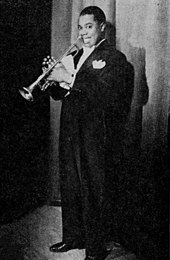
- Lale Anderson
- Harold Arlen
- Louis Armstrong
- Fred Astaire
- Count Basie
- Dalida
- Cab Calloway
- Eddie Cantor
- Nat King Cole
- Noël Coward
- Bing Crosby
- Vernon Duke
- Jimmy Durante
- Duke Ellington
- Ella Fitzgerald
- George Gershwin
- Ira Gershwin
- Benny Goodman
- Coleman Hawkins
- Billie Holiday
- Pete Johnson
- Louis Prima
- Artie Shaw
- Big Joe Turner
- Les Brown
- Lena Horne
- Al Jolson
- Jerome Kern
- Lead Belly
- The Ink Spots
- Glenn Miller
- Earl Hines
- Édith Piaf
- Cole Porter
- Ma Rainey
- Django Reinhardt
- Bill "Bojangles" Robinson
- Rodgers and Hart
- Frank Sinatra
- Bessie Smith
- Fats Waller
- Ethel Waters
Influential artists


Painters and sculptors
- José Clemente Orozco
- Anni Albers
- Josef Albers
- Hans Arp
- Milton Avery
- Romare Bearden
- Paula Modersohn-Becker
- Max Beckmann
- Thomas Hart Benton
- Max Bill
- Isabel Bishop
- Marcel Breuer
- Patrick Henry Bruce
- Paul Cadmus
- Marc Chagall
- John Steuart Curry
- Salvador Dalí
- Stuart Davis
- Charles Demuth
- Otto Dix
- Theo van Doesburg
- Arthur Dove
- Marcel Duchamp
- Max Ernst
- David Alfaro Siqueiros
- Philip Evergood
- Lyonel Feininger
- Joaquín Torres García
- Alberto Giacometti
- Arshile Gorky
- John D. Graham
- George Grosz
- Philip Guston
- Marsden Hartley
- Hans Hofmann
- Edward Hopper
- Johannes Itten
- Frida Kahlo
- Wassily Kandinsky
- Ernst Ludwig Kirchner
- Paul Klee
- Oskar Kokoschka
- Käthe Kollwitz
- Willem de Kooning
- Walt Kuhn
- Jacob Lawrence
- Tamara de Lempicka
- Fernand Léger
- Andrew Loomis
- Reginald Marsh
- André Masson
- Henri Matisse
- Joan Miró
- Piet Mondrian
- Gabriele Münter
- Georgia O'Keeffe
- Francis Picabia
- Pablo Picasso
- Horace Pippin
- Diego Rivera
- Ben Shahn
- Charles Sheeler
- David Smith
- Isaac Soyer
- Rafael Soyer
- Chaïm Soutine
- Rufino Tamayo
- Yves Tanguy
- Grant Wood
- N. C. Wyeth
- Andrew Wyeth
Photography

- Ansel Adams
- Margaret Bourke-White
- Walker Evans
- Lewis Hine
- Dorothea Lange
- Gordon Parks
- Man Ray
- Edward Steichen
- Carl Van Vechten
- Edward Weston
Sports figures


Global
- Cliff Bastin (English footballer)
- Donald Bradman (Australian cricketer)
- Haydn Bunton, Sr(Australian Rules footballer)
- Jack Crawford (tennis)
- Jack Dyer (Australian rules football player)
- Wally Hammond (English cricketer)
- Eddie Hapgood (English footballer)
- George Headley (West Indies cricketer)
- Alex James (Scottish footballer)
- Douglas Jardine (English cricketer)
- Harold Larwood (English cricketer)
- Jack Lovelock (New Zealand runner)
- Fred Perry (English tennis player)
- Leonard Hutton, English cricketer
- Percy Williams (sprinter)
- Dhyan Chand, Indian hockey player
- Lala Amarnath, Indian cricketer
United States
- Joe Louis (boxing)
- Lou Ambers (boxing)
- Henry Armstrong (boxing)
- Max Baer (boxing)
- Cliff Battles (halfback)
- Jay Berwanger (halfback)
- James J. Braddock (boxing)
- Ellison M. ("Tarzan") Brown (marathon)
- Don Budge (tennis)
- Tony Canzoneri (boxing)
- Mickey Cochrane (baseball)
- Buster Crabbe (swimming)
- Glenn Cunningham (running)
- Dizzy Dean (baseball)
- Joe DiMaggio (baseball)
- Babe Didrikson(track)
- Leo Durocher (baseball)
- Turk Edwards (tackle)
- Jimmie Foxx (baseball)
- Lou Gehrig (baseball)
- Hank Greenberg (baseball)
- Lefty Grove (baseball)
- Dixie Howell (halfback)
- Don Hutson (end)
- Cecil Isbell (quarterback)
- Bobby Jones (golf)
- John A. Kelley (marathon)
- Nile Kinnick (halfback)
- Tommy Loughran (boxing)
- Alice Marble (tennis)
- Ralph Metcalfe (sprinter)
- Bronko Nagurski (fullback)
- Mel Ott (baseball)
- Jesse Owens (sprinter)
- Satchel Paige (baseball)
- Bobby Riggs (tennis)
- Barney Ross (boxing)
- Babe Ruth (baseball)
- Al Simmons (baseball)
- Helen Stephens (track)
- Eddie Tolan (sprinter)
- Ellsworth Vines (tennis)
- Stella Walsh(sprinter)
- Frank Wykoff (sprinter)
Criminals
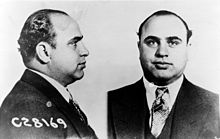
Prominent criminals of the Great Depression:
- Al Capone
- Bonnie and Clyde
- John Dillinger
- Baby Face Nelson
- Pretty Boy Floyd
- Alvin Karpis
- Machine Gun Kelly
- Ma Barker
See also
- Interwar period, worldwide
- Timeline of events preceding World War II
- Areas annexed by Nazi Germany and the pre-war German territorial claims on them.
- Diplomatic history of World War II
- European Civil War
- 1930s in literature
- Greatest Generation (the decade when the majority of WW II vets came of age).
Timeline
The following articles contain brief timelines which list the most prominent events of the decade:
References
- JSTOR 132824.
- ^ Hunt, Lynn. "The Making of the West: Peoples and Cultures" Vol. C since 1740.Bedford/St. Martin's, 2009.
- ISBN 0-8240-7029-1. Archivedfrom the original on 22 December 2016. Retrieved 12 January 2011.
- ^ "Manchukuo " Archived 2007-12-21 at the Wayback Machine Encyclopædia Britannica
- JSTOR 149486.
- ^ "The first central committee of IMRO. Memoirs of d-r Hristo Tatarchev", Materials for the Macedonian liberation movement, book IX (series of the Macedonian scientific institute of IMRO, led by Bulgarian academician prof. Lyubomir Miletich), Sofia, 1928, p. 102, поредица "Материяли за историята на македонското освободително движение" на Македонския научен институт на ВМРО, воден от българския академик проф. Любомир Милетич, книга IX, София, 1928.
- ^ "Inflation and CPI Consumer Price Index 1930–1939". Archived from the original on 2014-05-04.
- ^ "White Chocolate Made Of". www.thenibble.com. Archived from the original on 24 February 2011. Retrieved 2 May 2018.
- ^ "Pangborn-Herndon Memorial Site". Aviation: From Sand Dunes To Sonic Booms. National Park Service. Retrieved 2012-05-31.
- ^ "Howard R. Hughes, Jr.--The Record Setter". www.centennialofflight.net. Archived from the original on 2017-06-30. Retrieved 2017-12-24.
- ^ Del Barco, Mandalit. Revolutionary Mural To Return To L.A. After 80 Years. Archived 2018-05-02 at the Wayback Machine npr. October 26, 2010. Retrieved June 19, 2015.
- ^ Rondeau, Ginette La América Tropical Archived 2014-10-07 at the Wayback Machine Olvera Street Website Accessed 14 November 2014
- ISBN 0-8352-0908-3.
- ^ "History of The Three Stooges: Pop-Culture Icons Forever". Tedium: The Dull Side of the Internet. 2021-10-27. Retrieved 2023-12-27.
- ^ Robert Johnson Biography Archived 2011-03-24 at the Wayback Machine. Allmusic
- ^ "1930s Music: What Songs Were Most Popular?". Retrieved 2022-11-23.
- ^ Wilcox, R. Turner: The Mode in Fashion, 1942; rev. 1958, pp. 328–36, 379–84
Books and Magazines on Film
- Archive.org. Cited in "Biggest Money Pictures". Cinemaweb. Archived from the originalon July 8, 2011. Retrieved July 14, 2011.
- ISBN 978-0-312-10067-4.
Although costing $1250000—a huge sum for any studio in 1929—the film was a financial success. Karl Thiede gives the domestic box-office at $1500000, and the same figure for the foreign gross.
- ^ ISBN 978-0-520-20334-1.
- Cavalcade: p. 182. "Produced by Winfield Sheehan at a cost of $1.25 million, Cavalcade won Academy Awards for best picture, director, art direction and grossed close to $4 million during its first release, much of which came from Great Britain and the Empire."
- Whoopee: p. 212. "Produced by Sam Goldwyn at a cost of $1 million, the picture was an adaptation of a smash musical comedy built around Eddie Cantor...A personality-centered musical, Whoopee! made little attempt to integrate the comedy routines, songs, and story. Nonetheless, Cantor's feature-film debut grossed over $2.6 million worldwide and started a popular series that included Palmy Days (1931), The Kid from Spain (1932), and Roman Scandals (1933)."
- ^ Hell's Angels
- Balio, Tino (1976). United Artists: The Company Built by the Stars. University of Wisconsin Press. p. 110.
Hughes did not have the "Midas touch" the trade press so often attributed to him. Variety, for example, reported that Hell's Angels cost $3.2 million to make, and by July, 1931, eight months after its release, the production cost had nearly been paid off. Keats claimed the picture cost $4 million to make and that it earned twice that much within twenty years. The production cost estimate is probably correct. Hughes worked on the picture for over two years, shooting it first as a silent and then as a talkie. Lewis Milestone said that in between Hughes experimented with shooting it in color as well. But Variety's earnings report must be the fabrication of a delirious publicity agent, and Keats' the working of a myth maker. During the seven years it was in United Artists distribution, Hell's Angels grossed $1.6 million in the domestic market, of which Hughes' share was $1.2 million. Whatever the foreign gross was, it seems unlikely that it was great enough to earn a profit for the picture.
- Balio, Tino (1976). United Artists: The Company Built by the Stars. University of Wisconsin Press. p. 110.
- ^ Feaster, Felicia. "Frankenstein (1931)". Turner Classic Movies. Retrieved July 4, 2011.
- ^ Block & Wilson 2010, p. 163. "It drew $1.4 million in worldwide rentals in its first run versus $1.2 million for Dracula, which had opened in February 1931."
- ^ Vance, Jeffrey (2003). Chaplin: genius of the cinema. Abrams Books. p. 208.
Chaplin's negative cost for City Lights was $1,607,351. The film eventually earned him a worldwide profit of $5 million ($2 million domestically and $3 million in foreign distribution), an enormous sum of money for the time.
- ISBN 978-0-8131-3829-9.
- ch. 45. The Ten Commandments (1923). "Cost: $1,475,836.93; Gross: $4,169,798.38"
- ch. 56. The Sign of the Cross. "Cost: $694,064.67; Gross: $2,738,993.35 (to 1937)"
- ch. 68. Samson and Delilah. "Cost: $3,097,563.05"
- ch. 69. The Greatest Show on Earth. "Cost: $3,873,946.50; Gross receipts: $15,797,396.36 (to December 29, 1962)"
- ch. 70. The Ten Commandments (1956). "Cost: $13,272,381.87; Gross receipts: $90,066,230.00 (to June 23, 1979)"
- ^ Ramsaye, Terry, ed. (1937). "The All-Time Best Sellers – Motion Pictures". International Motion Picture Almanac 1937–38: 942–943.
Kid from Spain: $2,621,000 (data supplied by Eddie Cantor)
- ^ ISBN 978-0-85989-660-3.
Sources: Eddie Mannix Ledger, made available to the author by Mark Glancy...
- Grand Hotel: Production Cost $000s: 700; Distribution Cost $000s: 947; U.S. box-office $000s: 1,235; Foreign box-office $000s: 1,359; Total box-office $000s: 2,594; Profit $000s: 947.
- The Merry Widow: Production Cost $000s: 1,605; Distribution Cost $000s: 1,116; U.S. box-office $000s: 861; Foreign box-office $000s: 1,747; Total box-office $000s: 2,608; Profit $000s: -113.
- Viva Villa: Production Cost $000s: 1,022; Distribution Cost $000s: 766; U.S. box-office $000s: 941; Foreign box-office $000s: 934; Total box-office $000s: 1,875; Profit $000s: 87.
- Mutiny on the Bounty: Production Cost $000s: 1,905; Distribution Cost $000s: 1,646; U.S. box-office $000s: 2,250; Foreign box-office $000s: 2,210; Total box-office $000s: 4,460; Profit $000s: 909.
- San Francisco: Production Cost $000s: 1,300; Distribution Cost $000s: 1,736; U.S. box-office $000s: 2,868; Foreign box-office $000s: 2,405; Total box-office $000s: 5,273; Profit $000s: 2,237.
- ^ Shanghai Express
- Block & Wilson 2010, p. 165. "Shanghai Express was Dietrich's biggest hit in America, bringing in $1.5 million in worldwide rentals."
- ^ King Kong
- Jewel, Richard (1994). "RKO Film Grosses: 1931–1951". Historical Journal of Film, Radio and Television. 14 (1): 39.
1933 release: $1,856,000; 1938 release: $306,000; 1944 release: $685,000
- "King Kong (1933) – Notes". Turner Classic Movies. Retrieved January 7, 2012.
1952 release: $2,500,000; budget: $672,254.75
- Jewel, Richard (1994). "RKO Film Grosses: 1931–1951". Historical Journal of Film, Radio and Television. 14 (1): 39.
- ^ "I'm No Angel (1933) – Notes". Turner Classic Movies. Retrieved January 7, 2012.
According to a modern source, it had a gross earning of $2,250,000 on the North American continent, with over a million more earned internationally.
- ^ Finler 2003, p. 188. "The studio released its most profitable pictures of the decade in 1933, She Done Him Wrong and I'm No Angel, written by and starring Mae West. Produced at a rock-bottom cost of $200,000 each, they undoubtedly helped Paramount through the worst patch in its history..."
- ISBN 978-0-7864-6286-5.
- Way Down East: p. 52. "D.W. Griffith's Way Down East (1920) was projected to return rentals of $4,000,000 on an $800,000 negative. This figure was based on the amounts earned from its roadshow run, coupled with its playoff in the rest of the country's theaters. Griffith had originally placed the potential film rental at $3,000,000 but, because of the success of the various roadshows that were running the $4,000,000 total was expected. The film showed a profit of $615,736 after just 23 weeks of release on a gross of $2,179,613."
- What Price Glory?: p. 112. "What Price Glory hit the jackpot with massive world rentals of $2,429,000, the highest figure in the history of the company. Since it was also the most expensive production of the year at $817,000 the profit was still a healthy $796,000..."
- Cavalcade: p. 170. "The actual cost of Cavalcade was $1,116,000 and it was most definitely not guaranteed a success. In fact, if its foreign grosses followed the usual 40 percent of domestic returns, the film would have lost money. In a turnaround, the foreign gross was almost double the $1,000,000 domestic take to reach total world rentals of $3,000,000 and Fox's largest profit of the year at $664,000."
- State Fair: p. 170. "State Fair did turn out to be a substantial hit with the help of Janet Gaynor boosting Will Rogers back to the level of money-making star. Its prestige engagements helped raked in a total $1,208,000 in domestic rentals. Surprisingly, in foreign countries unfamiliar with state fairs, it still earned a respectable $429,000. With its total rentals, the film ended up showing a $398,000 profit."
- ^ Block, Alex Ben (2010), She Done Him Wrong, p. 173,
The worldwide rentals of over $3 million keep the lights on at Paramount, which did not shy away from selling the movie's sex appeal.
In: Block & Wilson 2010. - ISBN 978-1-56720-724-8.
The reaction to West's first major film, however, was not exclusively negative. Made for a mere $200,000, the film would rake in a healthy $2 million in the United States and an additional million in overseas markets.
- ^ Block & Wilson 2010, p. 135. "Total production cost: $274,076 (Unadjusted $s)."
- ^ ISBN 978-0-520-22253-3.
- The Merry Widow: p. 361 Cost: $1,605,000. Earnings: domestic $861,000; foreign $1,747,000; total $2,608,000. Loss: $113,000.
- San Francisco: p. 364 Cost: $1,300,000. Earnings: domestic $2,868,000; foreign $2,405,000; total $5,273,000. Profit: $2,237,000. [Reissues in 1938–39 and 1948–49 brought profits of $124,000 and $647,000 respectively.]
- ^ "Wall St. Researchers' Cheery Tone". Variety. November 7, 1962. p. 7.
- ISBN 978-1-60473-087-6.
Although Columbia's president, Harry Cohn, had strong reservations about It Happened One Night, he also knew that it would not bankrupt the studio; the rights were only $5,000, and the budget was set at $325,000, including the performers' salaries.
- ^ Snow White and the Seven Dwarfs
- Monaco, Paul (2010). A History of American Movies: A Film-By-Film Look at the Art, Craft, and Business of Cinema. ISBN 978-0-8108-7434-3.
Considered a highly risky gamble when the movie was in production in the mid-1930s, by the fiftieth anniversary of its 1937 premiere Snow White's earnings exceeded $330 million.
- Wilhelm, Henry Gilmer; Brower, Carol (1993). The Permanence and Care of Color Photographs: Traditional and Digital Color Prints, Color Negatives, Slides, and Motion Pictures. Preservation Pub. p. 359. ISBN 978-0-911515-00-8.
In only 2 months after the 1987 re-release, the film grossed another $45 million—giving it a total gross to date of about $375 million!
- "Snow White and the Seven Dwarfs (1987 Re-issue)". Boxoffice. Retrieved May 29, 2016.
North American box-office: $46,594,719
- "Snow White and the Seven Dwarfs (1993 Re-issue)". Boxoffice. Retrieved May 29, 2016.
North American box-office: $41,634,791
- Monaco, Paul (2010). A History of American Movies: A Film-By-Film Look at the Art, Craft, and Business of Cinema.
- ^ Snow White and the Seven Dwarfs and Pinocchio
- p. 207. "When the budget rose from $250,000 to $1,488,423 he even mortgaged his own home and automobile. Disney had bet more than his company on the success of Snow White."
- p. 237. "By the end of 1938, it had grossed more than $8 million in worldwide rentals and was ranked at the time as the second-highest-grossing film after the 1925 epic Ben-Hur".
- p. 255. "On its initial release Pinocchio brought in only $1.6 million in domestic rentals (compared with Snow White's $4.2 million) and $1.9 million in foreign rentals (compared with Snow White's $4.3 million)."
- ^ 1938
- You Can't Take It With You:"You Can't Take It With You Premieres". Focus Features. Archived from the original on September 13, 2012.
You Can't Take It With You received excellent reviews, won Best Picture and Best Director at the 1938 Academy Awards, and earned over $5 million worldwide.
- Boys Town: Block, Alex Ben (2010), Boys Town, p. 215,
The film quickly became a smash nationwide, making a profit of over $2 million on worldwide rentals of $4 million.
In: Block & Wilson 2010. - The Adventures of Robin Hood: Glancy, H. Mark (1995). "Warner Bros Film Grosses, 1921–51: the William Schaefer ledger". Historical Journal of Film, Radio and Television. 1 (15): 55–60. .
$3.981 million.
- Alexander's Ragtime Band: Block, Hayley Taylor (2010), Alexander's Ragtime Band, p. 213,
Once the confusion cleared, however, the film blossomed into a commercial success, with a profit of $978,000 on worldwide rentals of $3.6 million.
In: Block & Wilson 2010.
- You Can't Take It With You:"You Can't Take It With You Premieres". Focus Features. Archived from the original on September 13, 2012.
- ^ Chartier, Roy (September 6, 1938). "You Can't Take It With You". Variety. Retrieved September 13, 2011.
- ^ "Gone with the Wind". The Numbers. Nash Information Services. LLC. Retrieved February 8, 2013.
- Boxoffice. Retrieved May 29, 2016.
- ^ Gone with the Wind at Box Office Mojo
- ^ Hall & Neale 2010, p. 283 ."The final negative cost of Gone with the Wind (GWTW) has been variously reported between $3.9 million and $4.25 million."
Works cited
- Block, Alex Ben; Wilson, Lucy Autrey (30 March 2010). George Lucas's Blockbusting: A Decade-by-Decade Survey of Timeless Movies Including Untold Secrets of Their Financial and Cultural Success. Harper Collins. ISBN 978-0-06-196345-2.
- Finler, Joel Waldo (2003). The Hollywood Story. Wallflower Press. ISBN 978-1-903364-66-6.
- Hall, Sheldon; Neale, Stephen (2010). Epics, Spectacles, and Blockbusters: A Hollywood History. Wayne State University Press. ISBN 978-0-8143-3008-1.
Further reading
- Brendon, Piers. The Dark Valley: A Panorama of the 1930s (2000) global political history; 816pp excerpt
- Cornelissen, Christoph, and Arndt Weinrich, eds. Writing the Great War – The Historiography of World War I from 1918 to the Present (2020) free download; full coverage for major countries.
- ISBN 978-0-00-724076-0on Britain
- Garraty, John A. The Great Depression: An Inquiry into the Causes, Course, and Consequences of the Worldwide Depression of the Nineteen-Thirties, As Seen by Contemporaries (1986).
- Grenville, J.A.S. A History of the World in the Twentieth Century (Harvard UP, 1994) pp 160–251.
- Grossman, Mark. Encyclopedia of the Interwar Years: From 1919 to 1939 (2000). 400pp. worldwide coverage
- Lewis, Thomas Tandy, ed. The Thirties in America. 3 volumes. Pasadena: Salem Press, 2011.
- Watt D.C. et al., A History of the World in the Twentieth Century (1968) pp 423–463.
External links
- The Dirty Thirties – Images of the Great Depression in Canada
- America in the 1930s Extensive library of projects on America in the Great Depression from American Studies at the University of Virginia
- The 1930s Timeline year by year timeline of events in science and technology, politics and society, culture and international events with embedded audio and video. AS@UVA

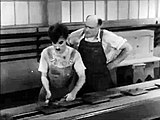
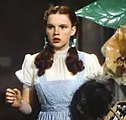

![The Three Stooges produced multiple short comedy films with Columbia Pictures during the decade, making them icons.[14]](http://upload.wikimedia.org/wikipedia/commons/thumb/2/24/Disorder_in_the_Court.JPG/155px-Disorder_in_the_Court.JPG)

